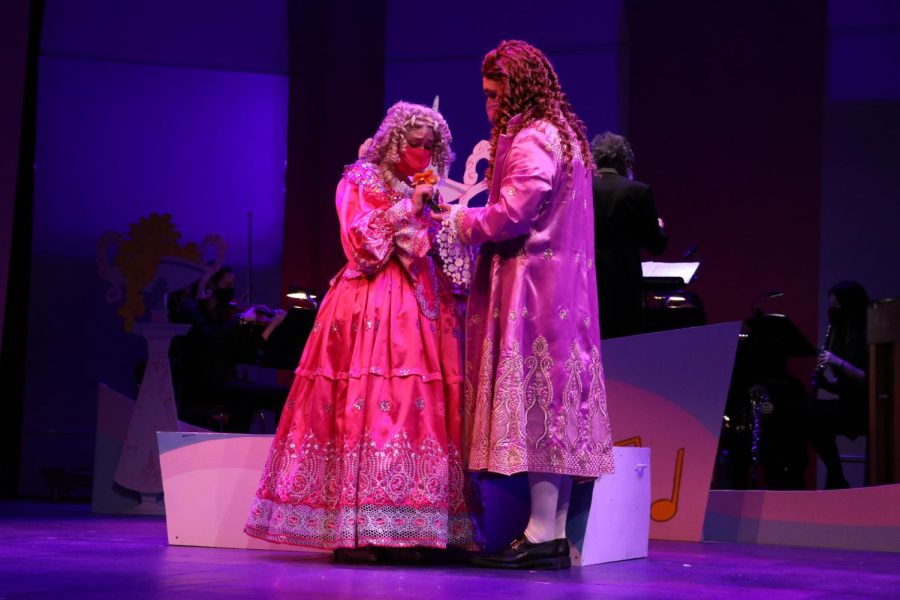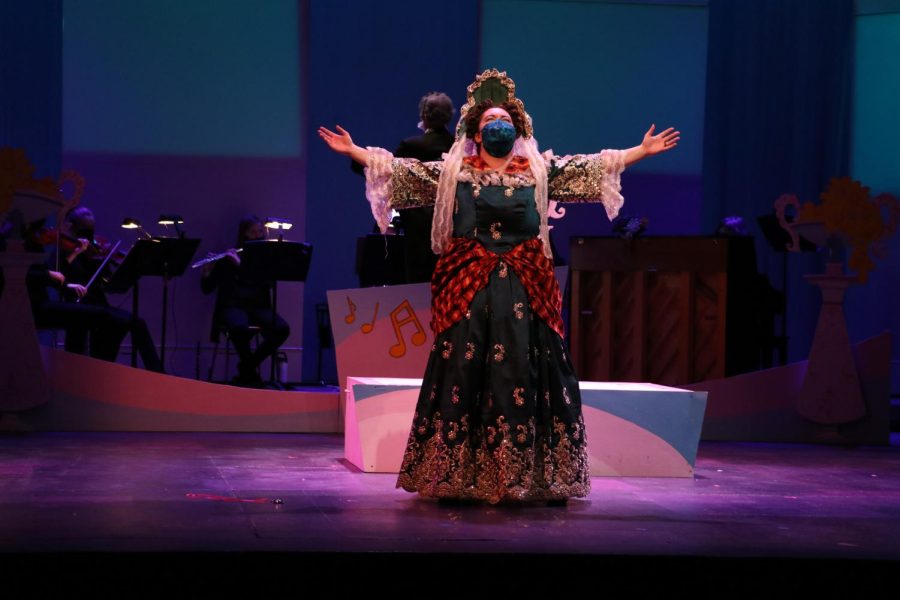Shows that shred tradition
‘The Harpies’ and ‘Signor Delus’
Shawn McCarron who plays Signor Deluso gives Claire Allen some flowers who plays his wife Clara, Tuesday night, Feb. 24, 2022.
February 27, 2022
UW-Whitewater’s College of Arts and Communication students started off their spring season with a two for one show, performing both The Harpies by Marc Blitzstein and Signor Delus by Thomas Pasatieri from Feb. 20-26 in Greenhill Center of the Arts’ Barnett Theatre. Intricately created scenes, props, and costumes all cohesively pulled the show together.
“In the original concept, the god Deus would be produced on stage via a machine (machina)- typically a crane that lowered an actor to the stage,” said Director Bruce Cohen. “Deus appears at the close of plot, when the action seems to be well past control, and dénouement (falling action) nearly impossible. It is at this point that an actor costumed as some divinely impressive figure would enter (e.g., the goddess Iris in The Harpies), to pronounce all conflict resolved.”
Technical aspects of the show included elaborate scene changes completed by a tech crew to support the differing settings in which the two stories were set. Following traditional storylines throughout, the directors decided to differ their take on the arrival of the god. Similarly, this adjustment made for a much more feminine arrival of the goddess, Iris, messenger of the gods.
This idea of noticeable distinction from tradition begins, however, with the authors themselves. Blitzstein and Pasatieri both added satirical twists to their shows in order to comment on social issues at the time, making their stories fresh with tones that challenged customs at the time.
“In the final analysis, both operas are ultimately spoofs on tradition,” said Director Robert Gehrenbeck. “In The Harpies, Blizstein not only proclaims his debt to Stravinsky’s neoclassicism, but he pokes fun at the older composer’s music. At the end of the fight scene, the dramatic flow is suddenly interrupted by a bizarre passage that is a take-off of some most familiar passages in Stravinsky’s Rite of Spring, a work that also depicts a mythological struggle between male and female-gendered characters.”














